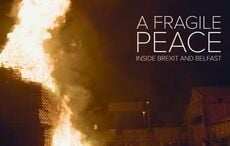The high-handed way Quinnipiac University has consigned Ireland's Great Hunger Museum - its mission and future - to the four winds echoes the disdain and mistreatment our Irish ancestors once faced – and it's a scandal beyond belief.
I'm intrigued by the official silence that has greeted the announcement that Ireland's Great Hunger Museum at Quinnipiac University is to close.
It seems to me that a museum that charts the experience of famished refugees fleeing a historic calamity (and the bigotry and hatred that prolonged it) would resonate in the United States. But instead, the collection is to be broken up and the great work silenced.
Why?
Is the human suffering this museum records – because it happened to the Irish - less worthy of our regard? Is that the message? Would cost-cutting be the first concern if it were not?
You simply cannot hope to understand the 19th century in Europe or America without reference to this museum, its collection, its publications, and the work it does.
But this week it was confirmed that the new President of Quinnipiac University Judy Olian plans to close the museum and move the collection (the largest in the world relating to the greatest social catastrophe in the 19th century in Europe) "elsewhere."
There should be uproar, but to date, though, the response has been muted. There are a host of reasons why this might be so and I've found myself reflecting on them this week.
The first reason could be that the announcement dovetails with a much older legacy of inherited shame and silence about the famine itself. Failure so catastrophic that one million people starved to death as a further million took to coffin ships fleeing for their lives, is not a story that garlands us with pride, is it?
The famine was the worst social catastrophe in Europe in the 19th century, it killed as many people as a low-level nuclear strike and almost 170 years later Ireland's population has still not recovered from it.
That's not the kind of feel-good narrative a tourism department or government minister wants to promote. Nevertheless, it is impossible to understand the Irish (or the immigrant) experience in the 19th century – in Ireland and America - without reference to it.
When the Irish playwright Tom Murphy began to write his play Famine (1968) he spoke of a revelation he had in the process of researching and writing the play: “Was I... a student or a victim of the Famine?” he asked. He was writing over 100 years after the events depicted in his play. But it still felt raw to him, the questions were still unsettled and unsettling.
I saw Murphy's famine play at The Lincoln Center Festival in 2012, presented by Druid Theatre Company. Next to me, for that performance, was the playwright Larry Kramer, who had chronicled another social disaster much closer to us in time. Also the son of immigrants, what parallels did he see in this story, I wondered?
Murphy's play was ultimately overwhelmed by the enormity of its subject, I felt. How do you write about a comet strike that decimates an island, a people, a language, and a potential future?
Some catastrophes leave a great silence in their wake and I was sad to see that Murphy, although he bore witness, was rattled in this instance, too electrified by the sheer voltage, to fully capture what he had seen and felt.
But shame and silence have attended the famine since the first blight was discovered. With the Irish already made tenants in their own country, banished to the worst land and the merest holdings, it would have been impossible not to absorb the idea – the way the abused often do - that all of this was somehow their own fault.
First, they were victimized, then for generations after, they conspired with their own abusers in an almost unbroken, generations-long era of shame and silence.
Irish playwright Brian Friel saw and understood our national tripwires better than any other Irish dramatist before or since. But he resisted, despite what some critics claim, the siren call of nationalism or any simplified presentation of the great hunger's enduring impact on our psyche in his work.
Nevertheless, great hunger is still his lifelong theme. That hunger is seen everywhere in his work, in the frustrated desire to act, to connect, to speak, or to love. What happened to us, what great disaster befell us, his works ask over and over – that we have become these haunted and famished avatars, cast out on the roads?
“I rhyme to see myself,” wrote Seamus Heaney, “ to set the darkness echoing.” That directive, to speak, write and record in order to interpret, was the mission statement of Ireland's Great Hunger Museum, which has produced the finest and most insightful writing on the calamity I have ever read.
That it is to be closed and the collection broken up is more than a cost-cutting exercise, it's an act of premeditated cultural vandalism, performed by actors who apparently have no real understanding of or compassion for the experience of fellow immigrants who faced one of the roughest origin stories in the United States.
The political reality is that the decision is made. So this is the time for a more imaginative American campus to continue the great work that was begun here. It is time for the Irish and their descendants too to step forward to protect their own origin story and with that their understanding of themselves.
Because that is what is at stake here. The high-handed way that this museum, its mission, and future has been consigned to the four winds echoes the disdain and mistreatment our Irish ancestors once faced – and it's a scandal beyond belief.




Comments